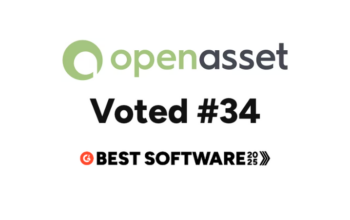With the advancement of technology, marketing for industries in the built environment has evolved. Customers have information at their fingertips and will readily research a business and its products or services. While AEC, Real Estate, and Hospitality companies can still get their messages in front of their customers with traditional marketing, there is no guarantee of sales.
Today, to increase revenues, firms need an inbound digital marketing strategy that finds customers, nurtures them, and exceeds their expectations. Unfortunately, many firms in the built world are still using old methods, despite a shrinking return on investment. While it may sound a lot to achieve, there are tools and technology that can help organizations make the leap, connect with their customers, and grow their sales.
What is Missing From AEC Marketing?
Marketing in AEC is only as good as the tools and methods that are being used. And, these tools need to be relevant to the world that a firm operates in. The truth of the matter is that strategies that worked ten years ago are unlikely to still yield the same return. Yet many AEC firms are still reserving a significant amount of their marketing spend to the likes of print advertising and exhibitions and expecting the same results.
While customers will still notice print adverts, they also all have mobile devices with 24/7 access to the internet. With technology being integral to everyone’s lives, organizations need to focus on digital marketing in AEC to be in with a chance of generating quality leads and gaining the customers they need.
Some firms in the built environment have been slower to adopt modern digital marketing tactics. This can be attributed to a reliance on traditional methods, but also a potential misconception of what online marketing consists of.
Online lead generation opens a firm’s marketing efforts to a broader audience, facilitates word of mouth, and encourages growth and profitability. It doesn’t mean that traditional marketing systems can’t be used, but that they are used alongside a digital strategy that can deliver a higher return on investment. It takes time and energy to get it right, of course, but with the right mix of strategies and technologies, it has the power to deliver.
What Marketing Ideas can AEC firms Introduce?
It can be easy for firms that are new to digital marketing to focus on generating customers, but time needs to be spent on building and nurturing relationships. To be successful, firms need to attract people to take a look at their business, convert them to leads, close sales, and then delight them with what they have to offer.
Digital marketing in AEC involves time and energy to ensure an active and consistent involvement. Fortunately, various ideas can be easily applied to help AEC firms boost their marketing efforts:
- Email marketing – while not a new idea, email marketing still plays an important role. However, the content in modern email marketing is bespoke for the segment receiving the email and will depend upon what stage in the buying process the recipient is.
- Search engine optimization (SEO) – SEO involves targeting keywords relevant to your firm in your web content. These keywords help to drive your website to the top of search engine rankings. By working on SEO, companies can increase organic site traffic and gain domain authority (DA). Domain authority shows sites to be trustworthy and useful to search engine users.
- Automation – automation enables marketers to use email marketing to its fullest. Composing individual messages or sending out generic messages to every lead isn’t a viable solution. With automation, email sequence can be created to nurture leads, and speak to them in the right way at the right time.
- PPC – Similar to SEO, PPC enables a website to get to the top of a listing for a specific keyword. The difference to SEO is that instead of working to achieve the listing organically, the position is paid for and can be achieved immediately. Every time someone clicks on an ad, the company will pay a small amount. The ‘Cost Per Click’ will be dependent on how competitive the keywords are.
- Remarketing – very few people convert to customers the first time they visit a website. Remarketing involves reconnecting with people who’ve already interacted with a business. Strategically positioning ads in front of these people can increase brand awareness and remind them of their considered connection with a company.
- Social media – social media offers organic and paid methods to reach an audience. With the right strategy, a business can make a significant impact by using Facebook, Twitter, Instagram, and LinkedIn. Success on social media sites relies on consistency; this means regular and relevant posts. As with PPC, you can run paid advertising on social media. However, social ads can be targeted at specific demographics such as age, location, industry, job role, etc.
- Content marketing – Content marketing, combined with SEO, is a primary way to increase organic website traffic. It involves producing regular content, such as blogs and other web content, that include relevant keywords. Content marketing is a medium to long-term strategy; it allows companies to build their reputation, present their ideas, and set themselves as thought leaders.
- Social proof – the idea of word of mouth marketing is one thing that hasn’t changed when it comes to growing a business in the built world. However, there are more channels. Recommendations, testimonials, and reviews on specialist review sites, your company website, or social media channels, can have a significant impact.
- Omnichannel marketing – one of the most essential ingredients of modern marketing is using all of the tools available. This means being available through all the devices and platforms that your customers would expect you to be present on. However, it is more than just about presence, it is creating a seamless, integrated experience. Each method of contact should be consistent, allowing them to interact in different ways but receive the same experience.
- Brand management – every brand needs to be managed, which means using brand assets to communicate value and build loyal relationships. There are constant opportunities for journalists, influencers, and social media users to influence a brand, but it is the company itself that should remain in control of its own story.
Marketing Tech for Built World Firms
With so many marketing ideas at a company’s disposal, it can be daunting to know how to bring them all together. However, this is where technology comes into play. By having the right technology in place, built world firms can bring their marketing ideas to fruition and reap the benefits of their digital marketing strategies.
The trick with marketing technology (Martech) is to build the right mixture of technology. A tech stack is the group of technologies your firm uses day-to-day. While each piece of tech should work well in its own right, they also need to integrate to improve efficiency and deliver increased customer value.
With the right tech stack, firms can make more from their marketing assets, target leads more effectively, and showcase their expertise to a broader audience.
Many built world firms already have must-have systems such as Customer Relationship Management (CRM) and Enterprise Resource Planning (ERP). However, many other tools can help to manage digital assets, automate marketing, and nurture leads. These tools, when integrated properly, can give CRM and ERP systems more power and create greater efficiencies. Martech solutions include:
- Marketing automation– software platforms designed to help marketing teams work effectively across multiple channels. These systems help firms find high-potential leads from their database and then automate data-driven targeted marketing programs.
- Analytics– web analytics tools allow firms to gain a better understanding of site performance. This helps them to continually improve the quality and effectiveness of their marketing content and improve customer experience.
- Social media management– a tool to help firms plan, schedule, and manage social media interactions across multiple platforms, ensuring that the brand has a consistent presence and is always a part of meaningful conversations.
- Digital Asset Management (DAM)– a central repository for managing, organizing, and retrieving digital assets. A DAM enables companies to link assets to other vital sales and marketing solutions and users to become more efficient in how they manage assets.
- Chatbot software – a tool to ensure website interactions with potential clients are always answered quickly and efficiently, providing an improved customer experience to website visitors.
- Video creation software– a tool to quickly create video content that can be shared across a firm’s website and social media channels.
- Content management system– a software application that enables users to easily create and modify digital content for use on corporate websites.
For the built world to compete in the digital age, they need to embrace not only new marketing ideas but the technology that will help them bring those ideas to fruition. After all, marketing technology, when used correctly, has the power to drive more growth and profitability at a lower cost.





